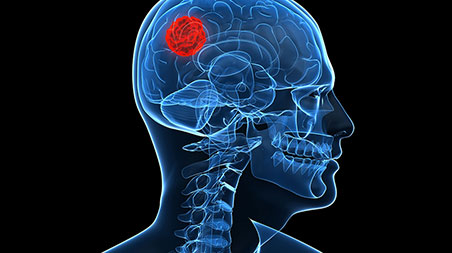
Neurosurgery
The Neurosurgery Service at Olympia Centro Médico Pozuelo provides an advanced approach to the main diseases of the nervous system that require surgical treatment.
We treat spinal pathologies at all levels using minimally invasive techniques, neuro-oncology (gliomas, meningiomas, neurinomas, metastases), and functional procedures such as the treatment of trigeminal neuralgia, epilepsy and movement disorders.
Our goal is to perform high-precision procedures using the latest technology and a patient-centred approach.
Featured technology
- Intraoperative CT O-ARM
Intraoperative CT O-ARM
O-ARM technology with intraoperative CT allows real-time 3D imaging during surgery, improving precision in spinal and cranial procedures. It facilitates surgical navigation, optimises implant placement and reduces risks, increasing the safety and efficacy of neurosurgical treatment.
- Next-generation neuronavigation with intraoperative ultrasound
Next-generation neuronavigation with intraoperative ultrasound
Next-generation neuronavigation with intraoperative ultrasound combines real-time imaging with advanced guidance systems, enabling precise localisation of tumours and brain structures during surgery. It improves safety, reduces risks and optimises resection, especially in oncological procedures or near critical functional areas.
- Functional intraoperative neuromonitoring
Functional intraoperative neuromonitoring
Functional intraoperative neuromonitoring allows real-time monitoring of the electrical activity of the brain and nerves during surgery, detecting any alterations that could compromise motor, sensory or language functions. This technology improves safety, preventing neurological damage and ensuring the preservation of critical functions.
Featured treatments

Arthrodesis and minimally invasive microdiscectomies with intraoperative CT guidance system (O-ARM)
Treatment using arthrodesis and minimally invasive microdiscectomies with intraoperative CT guidance system (O-ARM) allows for the treatment of skull and spine pathologies with high precision and lower tissue damage. The O-ARM provides real-time three-dimensional images during surgery, improving implant placement and procedural safety. These techniques reduce postoperative pain, bleeding and recovery time, allowing for a quicker return to daily activities. It is an effective and advanced option for the treatment of degenerative or traumatic spinal conditions.

Awake cancer surgery with intraoperative language monitoring
Awake cancer surgery with intraoperative language monitoring is used to remove brain tumours close to areas responsible for speech. The patient remains conscious during specific stages of the procedure so that their linguistic ability can be assessed in real time, while specific areas of the brain are stimulated. This allows the neurosurgeon to resect the tumour with maximum safety, preserving essential cognitive functions. This is an advanced, safe and highly effective technique that combines neuroimaging, neurophysiological monitoring and active patient collaboration to achieve the best possible functional and oncological outcome.

Microdecompression of trigeminal neuralgia-facial hemispasm
Microdecompression is a specialised surgical procedure used to treat trigeminal neuralgia and facial hemispasm, disorders caused by compression of cranial nerves by blood vessels. Through a small incision and using a surgical microscope, the affected nerve is accessed and a pad is placed between it and the vessel compressing it. The aim being to relieve severe pain or facial spasms without damaging the nerve. It is a safe, effective procedure, recommended when medical treatments do not provide adequate relief, with a high success rate and improvement in the patient’s quality of life.

Stereotactic deep brain stimulation surgery
Stereotactic deep brain stimulation surgery is an advanced procedure used to treat neurological disorders such as Parkinson’s disease, essential tremor, or dystonia. It involves implanting electrodes in specific areas of the brain, guided by high-precision imaging and a stereotactic frame. These electrodes are connected to a generator placed under the skin, which sends electrical impulses to modulate abnormal brain activity. It is a safe, reversible technique that can significantly improve motor symptoms and quality of life in patients who do not respond adequately to pharmacological treatments.




